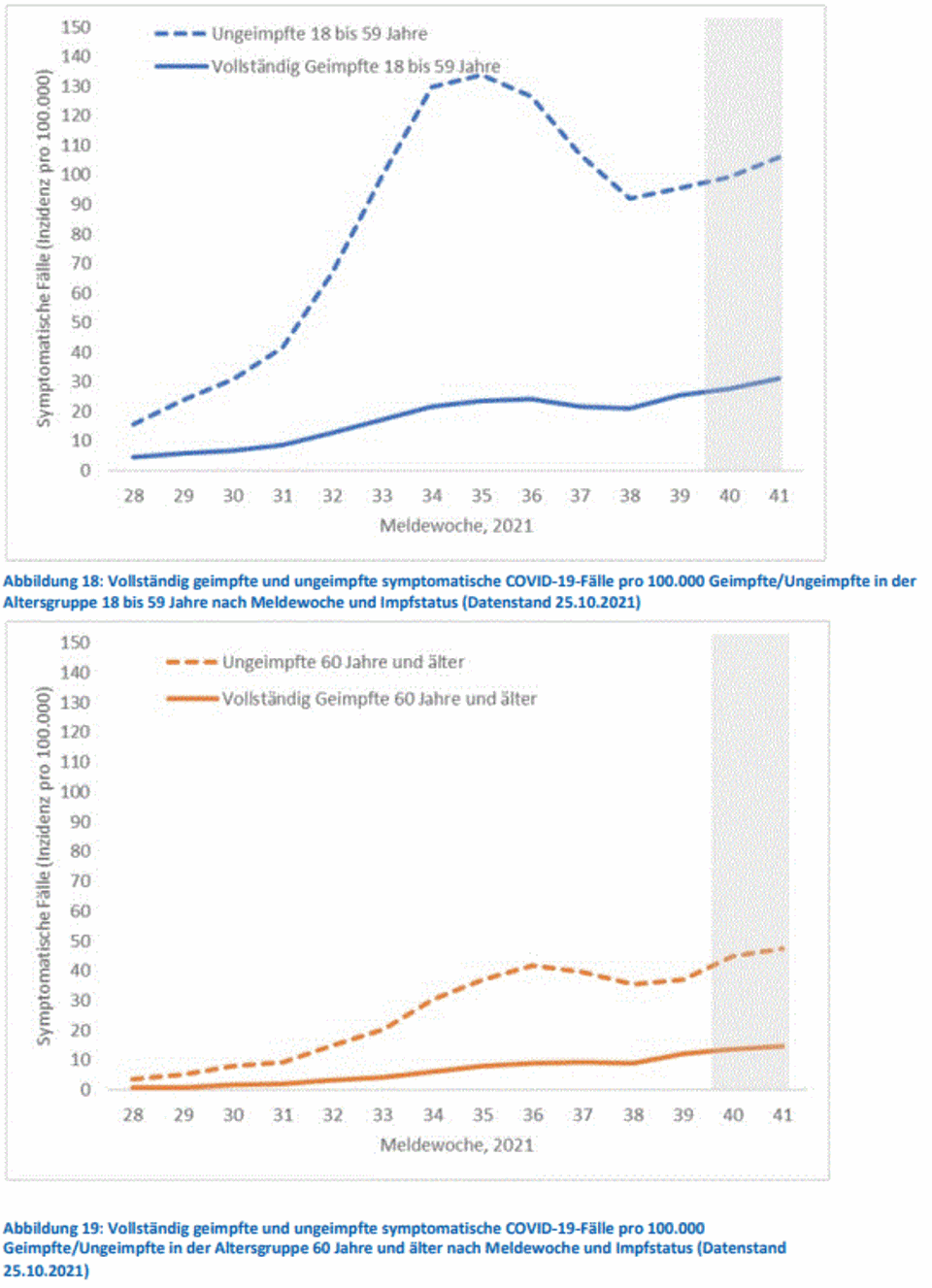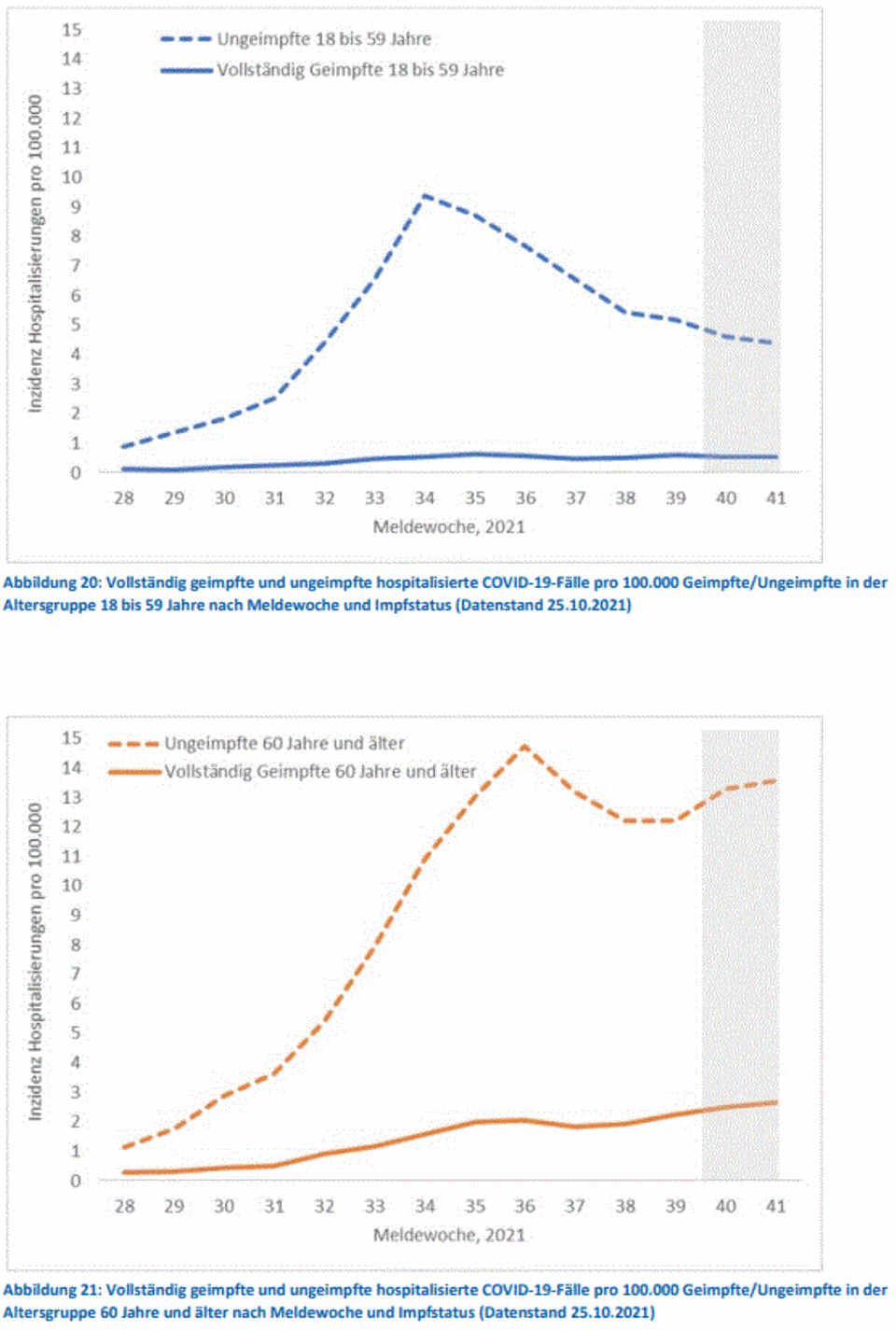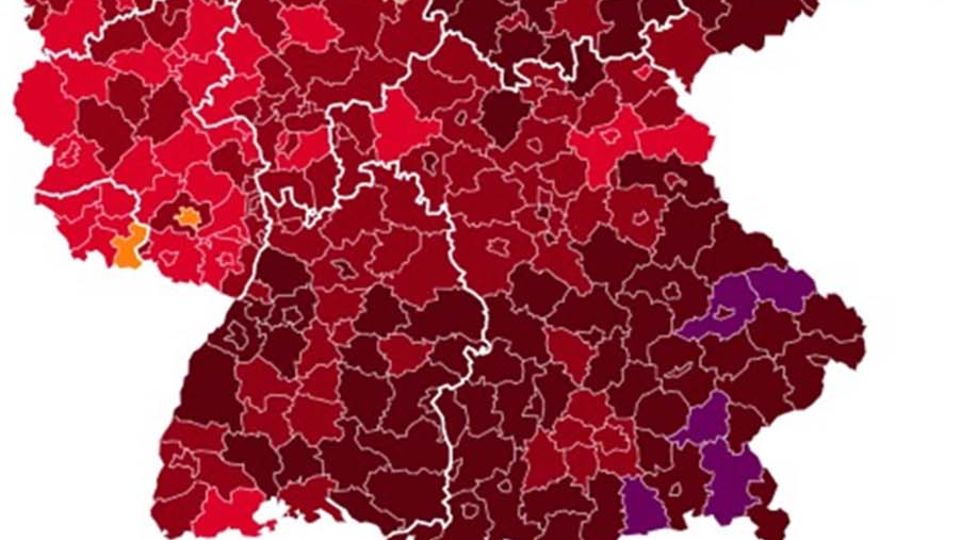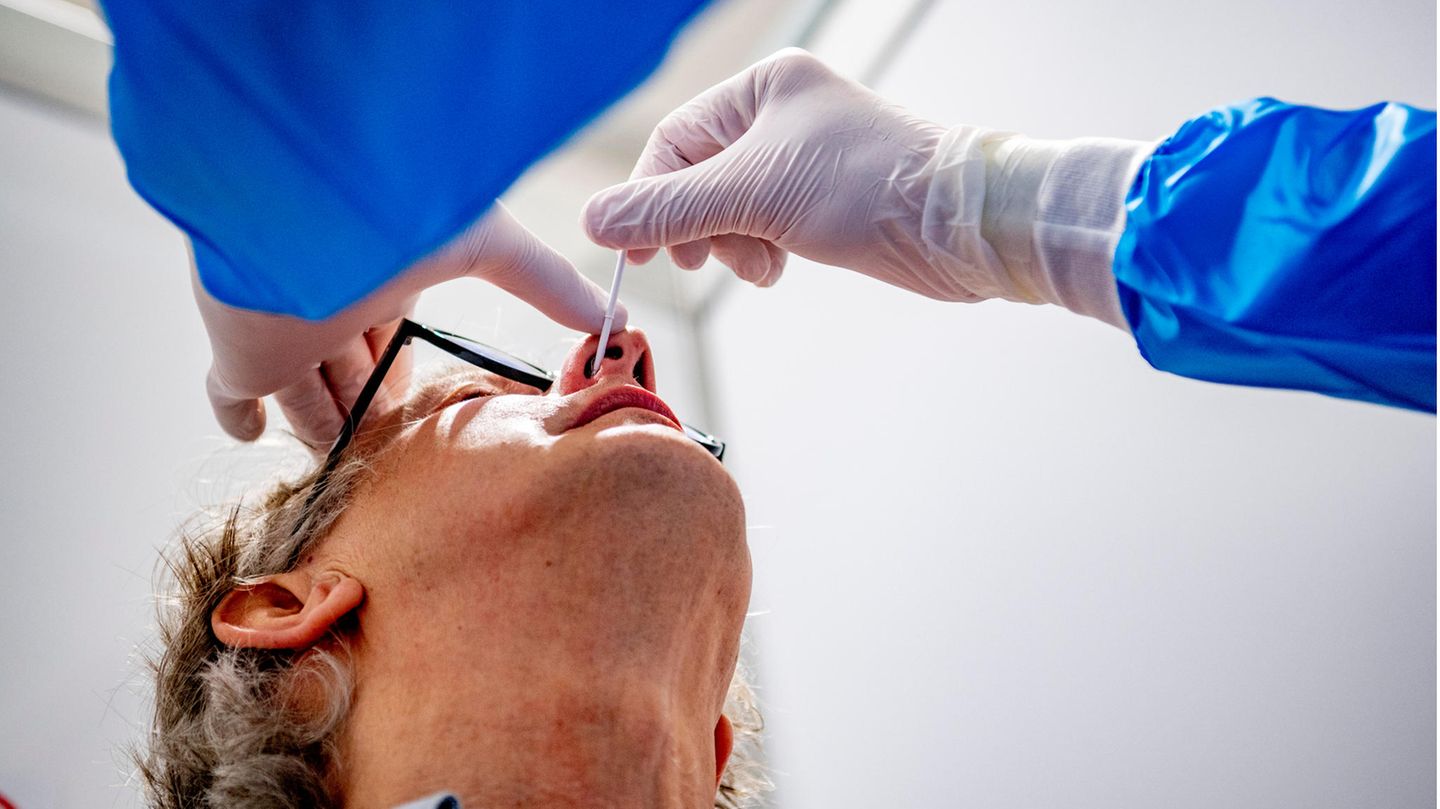In the latest Covid 19 weekly report from the Robert Koch Institute, the incidences of new infections and hospitalizations are broken down into vaccinated and unvaccinated infected people. The differences are big, but there are a few things to consider.
The corona numbers are increasing and the current wave of infections is described by various experts as a pandemic of the unvaccinated (You can read an analysis of this here at stern +). Some graphics in the RKI’s latest Corona weekly report show the same picture. It lists the incidences of symptomatic corona cases from the past few weeks as well as the incidences of hospitalizations according to age groups and vaccination status. In all cases, the number of unvaccinated persons is significantly higher than that of fully vaccinated persons – in some cases the values differ enormously, as the figures below show.
Incidence of new corona infections by vaccination status

Incidence of hospitalized corona cases by vaccination status
The numbers of unvaccinated and fully vaccinated people also differ widely when it comes to hospital admissions.

However, the informative value of the data is influenced by various factors. Among other things, it should be noted that the test behavior of vaccinated and unvaccinated people is likely to differ, as well as a possible delay in reporting the cases. In addition, only cases are recorded in which symptoms occurred, not asymptomatic ones. In addition, the prevention of infections among unvaccinated people due to the “community protection” achieved through high vaccination rates could lead to lower incidences even among unvaccinated people, writes the RKI in the report. In the case of hospitalizations, however, it cannot be ruled out that admissions for other reasons were recorded in the course of which an infection was found – although this should not be included there.
Why do vaccinated people also get infected or even have to go to hospital?
Vaccinations offer a high level of protection against infections and severe disease, but it is not 100 percent. However, the RKI can roughly estimate the effectiveness using a scientific screening method: By comparing the proportion of fully vaccinated among Covid-19 cases with the proportion of fully vaccinated in the population. The result for calendar weeks 39 to 42 is as follows:
- Protection against infection: about 75 percent (age 18 to 59 years) or about 73 percent (age 60 and over)
- Protection against hospitalization: about 90 percent (age 18 to 59 years) or about 85 percent (age 60 and over)
- Protection against treatment in the intensive care unit: about 94 percent (age 18 to 59 years) or about 91 percent (age 60 and over)
- Protection from death: about 98 percent (age 18 to 59 years) or about 85 percent (age 60 and over)
The vaccination effectiveness for the age group 12 to 17 years is currently not reported according to the RKI. The increasing number of vaccination breakthroughs – i.e. infections with symptoms despite a complete vaccination – is also to be expected, as the increased spread of the virus means that more and more people who have been vaccinated come into contact with it. Overall, however, the high effectiveness is confirmed from the clinical studies.

In the video: How fast and where exactly is the coronavirus spreading in Germany and the world? How are the numbers of infections developing in the federal states? The corona briefing from n-tv gives a current overview in the video.
Source From: Stern




